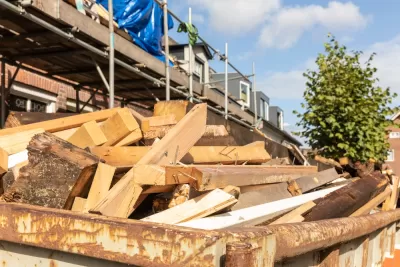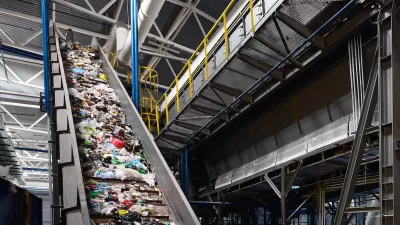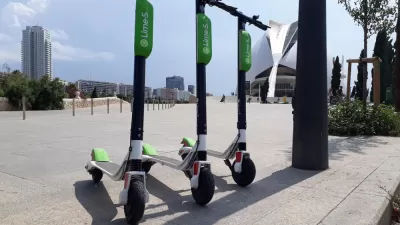A growing movement seeks to reduce waste in the construction industry and focus on the long-term impact of building materials.

Buildings may seem like a lasting investment, yet the construction industry creates roughly one-third of the world’s waste. To address this, researchers and architects are looking for ways to design buildings to be more sustainable, adaptable, and recyclable through a process known as ‘circular building.’ Nicole Gull McElroy describes the movement in Wired.
Circular building is “the practice of making buildings that can be more easily disassembled, moved, or repurposed” and built with reusable materials. “While circular construction and design for disassembly is often practiced on a smaller scale, many architects and designers are pushing the idea forward and testing the limits of what’s possible with larger projects.”
The article describes several examples of projects designed to expand on circular building and bring it into mainstream design practices, aided in some cases by public policy. Los Angeles requires that 65 percent of construction waste be recycled. “Portland, Oregon, was the first to enact deconstruction ordinances and waste removal strategies in 2016. Milwaukee followed in 2017.” And the Office of Historic Preservation in San Antonio, Texas created a Deconstruction and Circular Economy Program, which focuses on the link between preservation, deconstruction, and affordable housing. According to program manager Stephanie Phillips, the process is about “reversing the dependency on replacement products and the widespread disposal of valuable cultural assets while maintaining local cultural identity and a key source of generational wealth for our longtime residents: their homes.”
FULL STORY: Hey Man, Can I Use That Building When You’re Done With It?

Planetizen Federal Action Tracker
A weekly monitor of how Trump’s orders and actions are impacting planners and planning in America.

Map: Where Senate Republicans Want to Sell Your Public Lands
For public land advocates, the Senate Republicans’ proposal to sell millions of acres of public land in the West is “the biggest fight of their careers.”

Restaurant Patios Were a Pandemic Win — Why Were They so Hard to Keep?
Social distancing requirements and changes in travel patterns prompted cities to pilot new uses for street and sidewalk space. Then it got complicated.

Platform Pilsner: Vancouver Transit Agency Releases... a Beer?
TransLink will receive a portion of every sale of the four-pack.

Toronto Weighs Cheaper Transit, Parking Hikes for Major Events
Special event rates would take effect during large festivals, sports games and concerts to ‘discourage driving, manage congestion and free up space for transit.”

Berlin to Consider Car-Free Zone Larger Than Manhattan
The area bound by the 22-mile Ringbahn would still allow 12 uses of a private automobile per year per person, and several other exemptions.
Urban Design for Planners 1: Software Tools
This six-course series explores essential urban design concepts using open source software and equips planners with the tools they need to participate fully in the urban design process.
Planning for Universal Design
Learn the tools for implementing Universal Design in planning regulations.
Heyer Gruel & Associates PA
JM Goldson LLC
Custer County Colorado
City of Camden Redevelopment Agency
City of Astoria
Transportation Research & Education Center (TREC) at Portland State University
Camden Redevelopment Agency
City of Claremont
Municipality of Princeton (NJ)





























